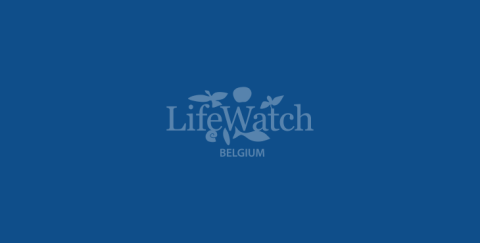Demo LifeWatch data services and use cases at YSD 2014
The LifeWatch data services and use cases were demonstrated at the VLIZ Young Marine Scientists' Day 2014 (March 7th, Bruges, Belgium).

The LifeWatch data services are available at http://lifewatch.be/data-services. Through this interactive section of the LifeWatch.be portal users can upload their own data using a standard data format, and choose from several data services, models and applications to process and analyze their data. The web services currently available include:
In the future more data services will become available. The online manual includes a step-by-step guide of how to use the data services, a description of the LifeWatch data format and a description of the available data services.
The LifeWatch data services can also be used in a concatenated way, where the output of one web service is the input for another web service. This is demonstrated in four use cases:
USE CASE 1: MARINE SPECIES OBSERVATIONS IN 1000M RADIUS AROUND OBSERVATION POINTS.
You upload a list with your own marine species observations and want to know how many times these species were already observed in a 1000m radius around your observation points (based on OBIS).
USE CASE 2: MARINE SPECIES LIST AND NUMBER OF OBSERVATIONS PER GEOGRAPHICAL AREA.
You upload a list with marine place names (e.g. name of an EEZ, Ocean) and want to know which species have already been observed in these areas, and how many times (based on OBIS).
USE CASE 3: LIST OF GEOGRAPHICAL AREAS PER MARINE SPECIES.
You upload a list of marine species names and want to know in which Exclusive Economic Zones (EEZs) these species have already been observed (based on OBIS).
USE CASE 4: QUALITY CONTROL OF BIODIVERSITY DATA SETS.
You upload an entire data set and want to perform a series of quality control steps on your data.
- Data validation and QC services
- Marineregions gazetteer services
- Taxon observations
- Taxon services
- Tidal services
- Geographical services – Administrative boundaries
- Geographical services – Bathymetry
- Geographical services – Biogeographical classification
- Geographical services – Environmental data
- Geographical services – Features
- Geographical services – Protected areas
- Geographical services – Total biological valuation
In the future more data services will become available. The online manual includes a step-by-step guide of how to use the data services, a description of the LifeWatch data format and a description of the available data services.
The LifeWatch data services can also be used in a concatenated way, where the output of one web service is the input for another web service. This is demonstrated in four use cases:
USE CASE 1: MARINE SPECIES OBSERVATIONS IN 1000M RADIUS AROUND OBSERVATION POINTS.
You upload a list with your own marine species observations and want to know how many times these species were already observed in a 1000m radius around your observation points (based on OBIS).
USE CASE 2: MARINE SPECIES LIST AND NUMBER OF OBSERVATIONS PER GEOGRAPHICAL AREA.
You upload a list with marine place names (e.g. name of an EEZ, Ocean) and want to know which species have already been observed in these areas, and how many times (based on OBIS).
USE CASE 3: LIST OF GEOGRAPHICAL AREAS PER MARINE SPECIES.
You upload a list of marine species names and want to know in which Exclusive Economic Zones (EEZs) these species have already been observed (based on OBIS).
USE CASE 4: QUALITY CONTROL OF BIODIVERSITY DATA SETS.
You upload an entire data set and want to perform a series of quality control steps on your data.



